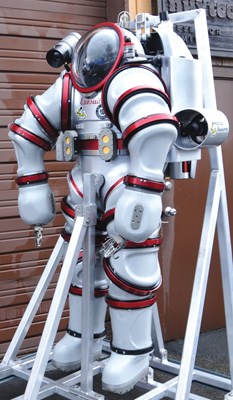JAMES Cameron's celebrated journey to the bottom of the sea this week was a lot more than an exercise in showboating, according to North Vancouver's resident deepwater submersible expert.
Phil Nuytten, founder of Nuytco Research Ltd. and a longtime friend of the famed Titanic director, said Cameron's 11-kilometre solo plunge into the Mariana Trench Monday was the culmination of his serious passion and expertise.
"Jim Cameron is a frustrated undersea technologist at heart," said Nuytten. "He loves the whole undersea business. He likes nothing better than diving in submarines."
The March 26 expedition, organized together with National Geographic, saw the Canadian filmmaker descend into an area of the trench called the Challenger Deep near Guam. Cameron navigated around the bottom for more than two hours before being forced to surface by a malfunction in the vehicle's hydraulics. It was the deepest solo dive ever, and the first manned voyage to the trench since the middle of the last century.
Nuytten, who first met the director while assisting him on the 1989 underwater sci-fi movie The Abyss, said the technology that made the feat possible was entirely Cameron's.
"This is his deal," said Nuytten. "This is his sub; it's his baby; he's completely responsible for it."
Nuytten's company, which designs and manufactures submersibles and other marine equipment, did some consultation on the project, code-named Acheron, over the past six years or so, but it played no role in designing the vessel, he said. That was all Cameron.
"He didn't say: 'What do you think, Phil? What should we do for life support?'" said Nuytten. "He said: 'Here are the exact details of what I want; can you build it?' I became the blacksmith. . . . He was the architect. The people he's hired are merely experts in individual specific fields that he needs to get his design and his ideas done."
The technology Cameron developed for the expedition will have other real-world applications, he added.
"There's some cutting-edge - actually it's past cutting edge - technology in this sub that has simply never been done before," said Nuytten, giving the example of a syntactic foam Cameron invented to give his craft buoyancy without adding a lot to its size. "We'll be using it. . . . At depths that are fairly (significant), to get that kind of foam is amazing. There are all sorts of other innovations that are built into this thing that will be used."
The director's expedition was not the only reason Nuytten drew media attention this week. On the weekend, his company made headlines when it unveiled a new hard metal dive suit called the Exosuit at a trade show in New Jersey. Billed as a "submarine in the shape of a human being," the device allows a diver to descend as much as 1,000 feet (305 metres) without being subjected to the crushing pressure normally experienced at that depth. That capability will let drill rig operators and other companies that need to perform deep-sea work avoid the time and expense associated with unprotected divers - a practice called saturation diving - which involves large support craft, expensive equipment and days of compression and decompression.
While Nuytco's 27-year-old Newtsuit affords the same protection to a similar depth as the Exosuit, its successor boats a number of upgrades, including 50 hours of life support, high-definition 3-D video, a fibre optic connection to the surface, lighter construction, more ease of movement and more sensitive thrusters.
"You can't do it at twice the speed but you can do it with half the effort, which as far as wearing out divers goes, makes a big difference," said Nuytten.
By removing the arms and legs, users can also convert the half-million-dollar suit to an unmanned, remotely controlled submersible. Nuytten plans to push the technology further in the near future.
"Our next suit will be a 2,000-footer, and then the one after that will be 3,000 feet," he said. "No one has ever gone to 3,000 feet in an atmospheric diving suit."



